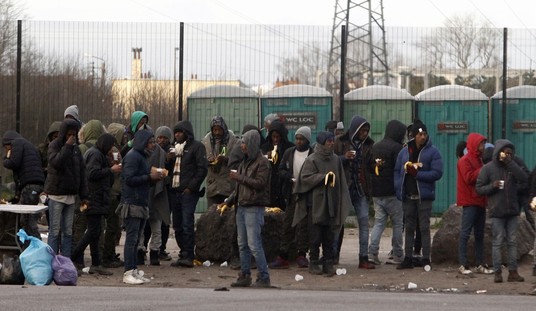Somewhere in here, there’s a lesson to be learned about government distortion of private markets. When government artificially inflate the value of a commodity in attempting social engineering, it usually either spends more money than they initially realize, leave the private sector holding the bag, and make themselves look foolish … at best:
The government suspended the explosively popular cash-for-clunkers program, fearing it would go broke before it could pay what it still owes dealers for a huge backlog of sales, according to congressional offices and a dealer group.
Suspension of the program was confirmed by Bailey Wood, legislative director for the National Automobile Dealers Association (NADA), which had been called Thursday night by the National Highway Traffic Safety Administration, which administers the program. Rep. Candice Miller, R-Mich., confirmed as well, saying she had been told by congressional leaders.
Why was it “explosively popular”? It made worthless cars valuable again. The vehicles got $4500 for a brief window rather than their previous real value, in many cases a fraction of the government payout. That inflated value prompted people to rush to their local dealers to use their government subsidy to buy new vehicles.
Unfortunately, Congress miscalculated how many people would be willing to squash their old car for that kind of boost in trade-in value. No harm, no foul, right? Not exactly:
Carmakers and dealers have booked expensive advertising to capitalize on buyers’ interest in CARS, and now will be left promoting a tie-in with a discontinued government program — one that wasn’t supposed to end until Nov. 1. “Disappointed,” says Chrysler spokesman Scott Brown..
“It’s too late to recall the ads,” says Beau Boeckmann of Galpin Ford, the nation’s largest Ford dealer, in Los Angeles. Galpin had done about 100 clunker deals and was hoping for more. ” We had increased our ad budget to get the word out. We are very heavy on radio, newspaper and getting direct mail together,” Boeckmann says.
“Now what do you tell people when they walk in” for a clunker deal? “It’s tough.”
And how did the government run what should have been a relatively simple program? In its typical fashion:
Rules governing the program totaled 135 pages. They required dealers to register, then to fill out electronic forms after each transaction. Dealers had to guarantee they gave the customer the appropriate discount, that they wrecked the engine in the clunker so it never could be reused, than the non-running junker went to a scrap dealer.
“They keep coming up with new forms to sign,” says Churchill.
In the Queens borough of New York, Paragon Honda already hauled away nearly 60 clunkers to a junkyard before it found the rules require them to be disabled on the auto lot. Now they have to be brought back, have their engines destroyed and hauled back.
The government imposed all these costs and heightened expectations on car dealers without having a plan . And this was just to kill a few hundred thousand gas-guzzlers. Imagine what it will be like when the government takes charge of keeping hundreds of millions of people healthy.
Of course, no one has really explained why taxpayers should subsidize the destruction of gas-guzzlers (we do remember that we’re paying those ridiculous subsidies, don’t we?) that many of us couldn’t afford when they were sold as new, or that we had better sense than to buy. No one explained why taxpayers should subsidize sub-prime loans for people who didn’t qualify to buy the houses they wanted ten years ago, either. It’s yet another example of how government rarely learns from its own mistakes. This one, fortunately, will be much less costly, but therefore also much less likely to teach people anything.








Join the conversation as a VIP Member